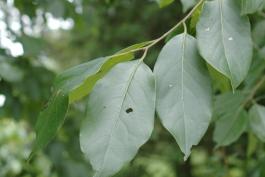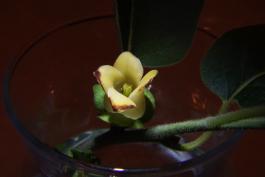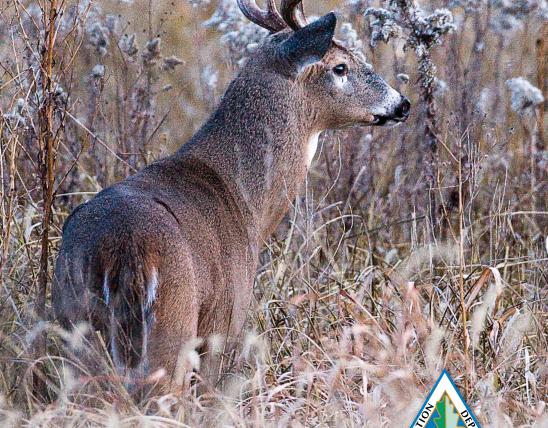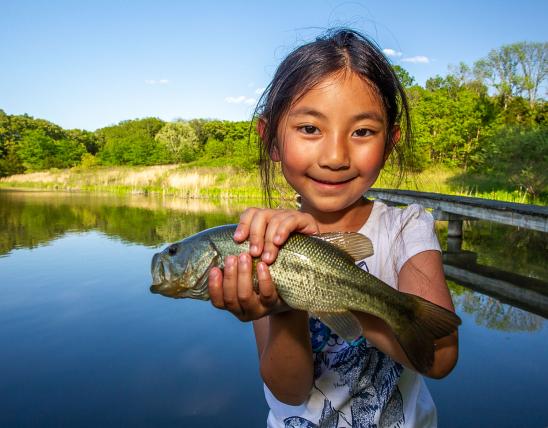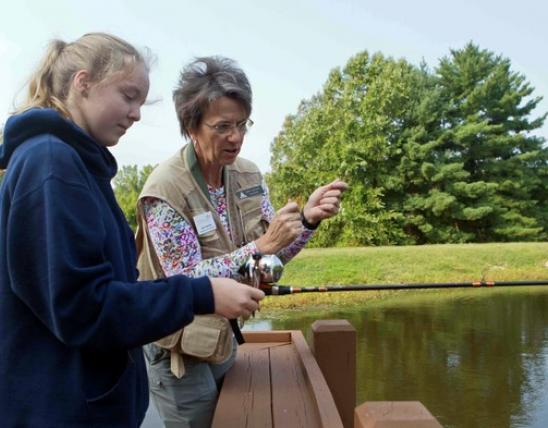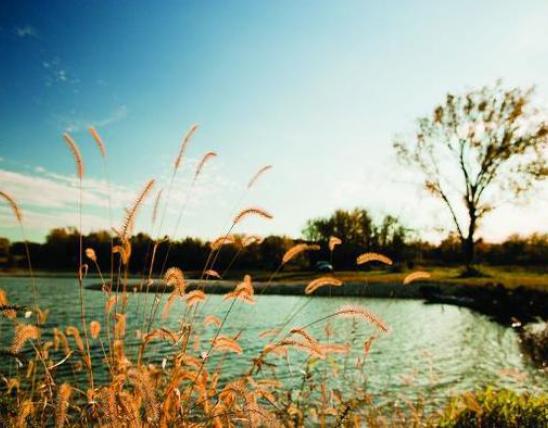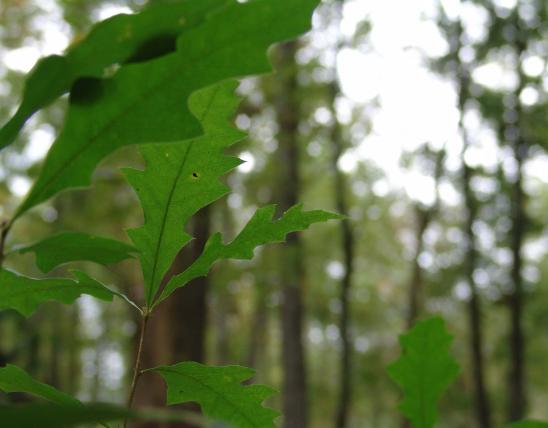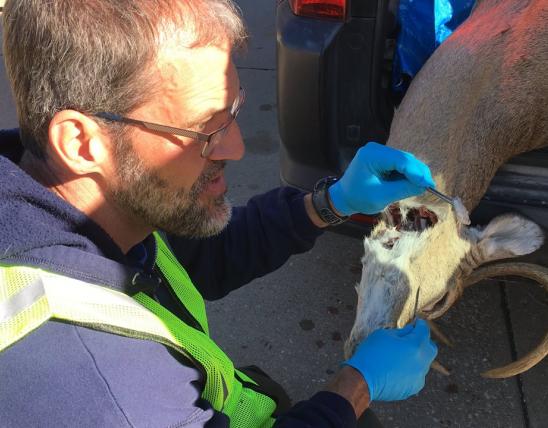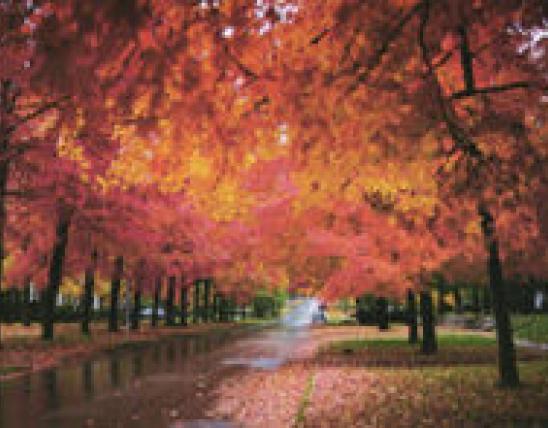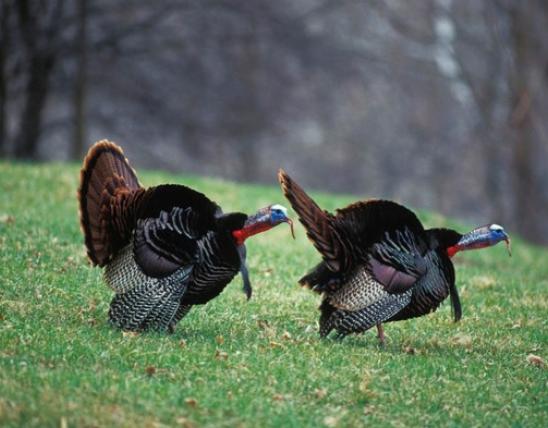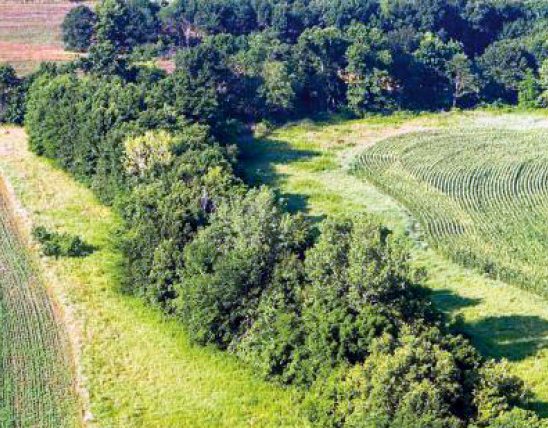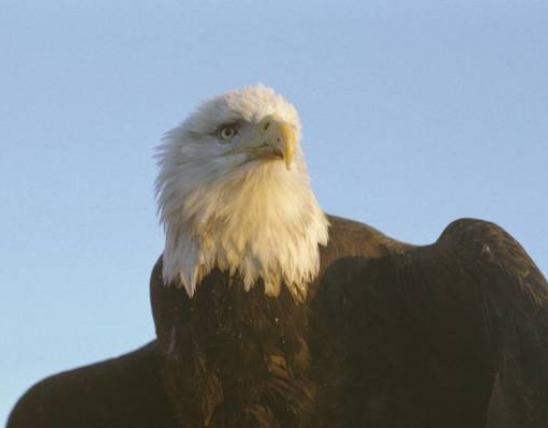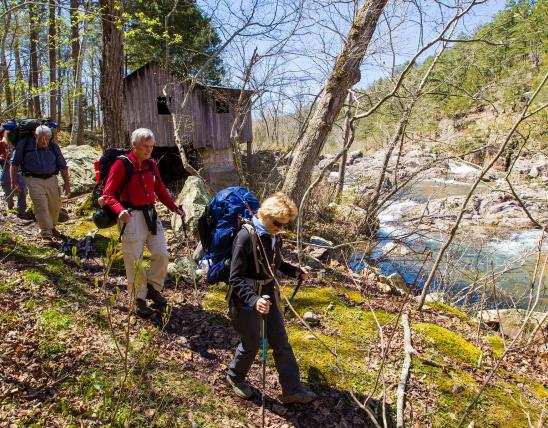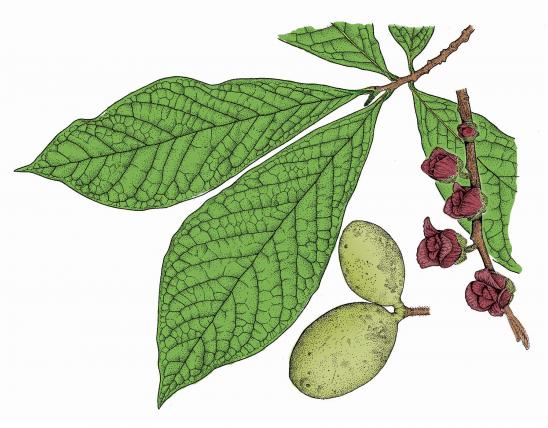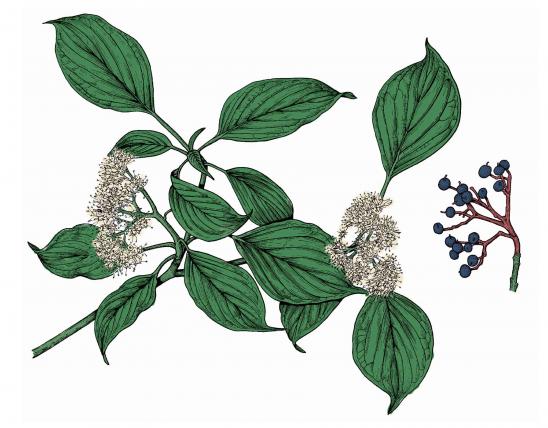
Persimmon is a medium-sized tree, varying in size and shape with growing conditions.
Leaves are alternate, simple, 2–6 inches long, 1–3 inches wide, broadest at the middle; margin lacking teeth; upper surface pale green, shiny; lower surface paler, smooth to somewhat hairy. Somewhat leathery.
Bark is distinctive: dark brown to black, grooves deep, ridges broken into thick, square to rectangular blocks, resembling alligator hide.
Twigs are slender, gray to reddish-brown, somewhat zigzag; pores orange; end bud absent.
Flowers late May–June, with male and female flowers on separate trees. Male flowers in clusters of 2–3, greenish-yellow, urn-shaped; female flowers solitary, urn-shaped with tips curved back, greenish-yellow to creamy white, fragrant.
Fruits September–October. Fruit orange to orange-purple, about ¾–1½ inches long and wide, globe-shaped; sweet, edible when ripe. Prior to ripening, astringent and puckery to taste.

Habitat and Conservation
Human Connections
Ecosystem Connections











